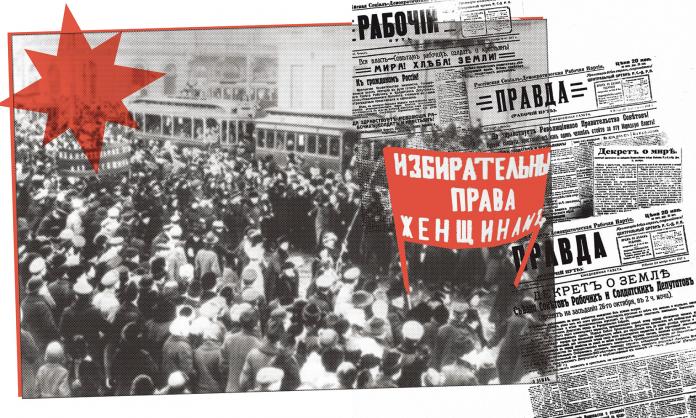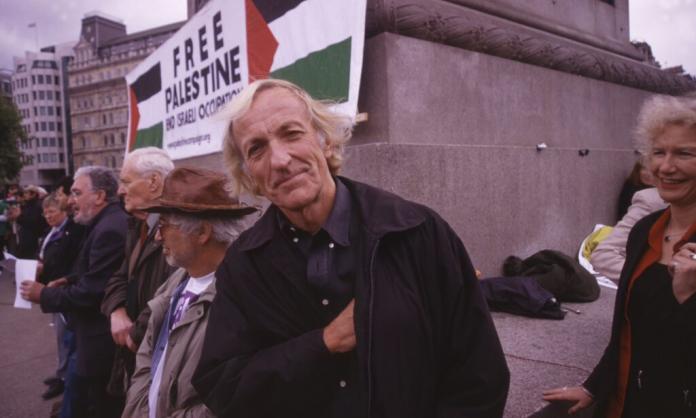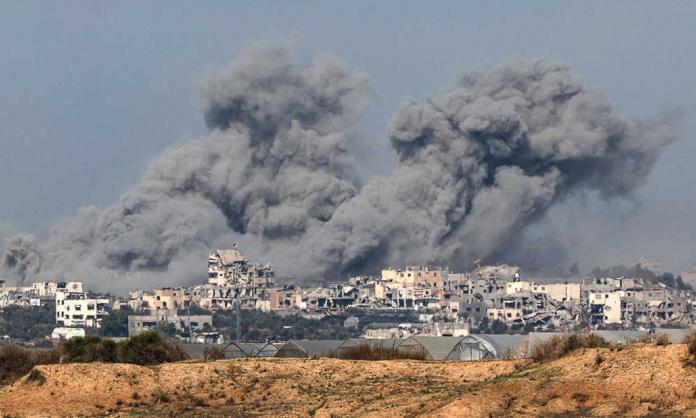Pravda, the newspaper indelibly associated with the Bolshevik Party and the Russian Revolution, means “truth”. It’s an appropriate name for a publication that set out to relate and generalise the experiences and struggles of the Russian working class, which was numerically small and scattered over a vast area in the early twentieth century. Pravda aimed to impart a fundamental truth to its working-class readers: that the tsarist autocracy, and beyond that, the capitalist system of exploitation, could never be reformed. Only a revolution could satisfy the needs and aspirations of ordinary people. This aspect of Pravda’s project often had to be discussed in code, to avoid attracting the wrath of the censors.
If you look at the second page of the print issue of Red Flag, under the heading “What is Red Flag about?”, you’ll see that the first point is “telling the truth”, followed by “supporting resistance”, “fighting for socialism” and “intervening in struggles”. These are the essential functions of the revolutionary press. The precise emphasis of each will vary over time. Factors like the historical circumstances, the balance of class forces and the level of class struggle determine the balance between what we could describe as propaganda and agitation in revolutionary publications, though the two are never totally counterposed. But whatever the circumstances, telling the truth is always paramount.
As early as 1901, in his pamphlet What is to be done?, Bolshevik leader Vladimir Lenin had spelled out his conception of a revolutionary newspaper. It “is not only a collective propagandist and a collective agitator”, he wrote, “it is also a collective organiser”. Pravda was to a great extent the realisation of that conception. It was launched as a Bolshevik daily paper in 1912, then banned when World War One began in 1914; publication resumed only after the February 1917 revolution. It’s fair to say that Pravda was the “mirror of the revolution” as it developed and unfolded, but it was also much more than that. It didn’t just reflect events: it was designed to intervene in the class struggle and played an important role in cohering the vanguard of the Russian working class around revolutionary principles and practice.
Mirrors don’t always flatter, of course. For all its strengths, Pravda had weaknesses, and at times it reflected confusion and disagreements in the Bolshevik leadership. The history of Pravda also provides a compelling argument against the myth of Lenin as a party dictator whose word was law and blindly followed by the Bolshevik members. In fact, Lenin’s relationship with Pravda was often tempestuous; on many occasions, he had to fight to get his articles published.
After the defeat of the 1905 revolution, there was a period of dark reaction in Russia. But the class struggle began to revive before too long. In January 1912, a Bolshevik conference recorded that “the onset of a political revival is to be noted among broad democratic circles, chiefly among the working class. The workers’ strikes, the beginning of demonstrations and working-class meetings ... (the student strikes), etc., are all indications of the growing revolutionary feelings of the masses”.
The movement got a huge boost following a massacre of gold miners in Lena in April. With 6,000 miners on strike, police fired on an unarmed demonstration, killing or wounding 500. News of this outraged the working class throughout the country. There were street demonstrations, meetings and protests; up to 300,000 workers took part in protest strikes, and 400,000 in a May Day strike. Also in 1912, there were elections for the fourth duma, the tsar’s phoney parliament. Although socialist parties were banned, individuals could stand for election, and deputies enjoyed a degree of immunity. It thus provided a platform for the dissemination of revolutionary ideas. Thirteen socialists were elected, including six Bolsheviks.
“Everyone realises that without a [daily workers’] newspaper, participation in the elections would be virtually a sham”, Lenin later wrote in Pravda. “A newspaper is the chief weapon in the election campaign, the chief means for Marxist agitation among the masses.” The duma elections provided a rare opportunity for the Bolsheviks to do legal mass work. This, plus the revival of the class struggle, provided the context for the launch of a daily paper. The first issue appeared on 5 May. Pravda took off rapidly, selling between 40,000 and 60,000 copies a day—a remarkable achievement given the conditions.
Tsarist repression posed enormous challenges, as the Bolsheviks knew from experience. From December 1910, they had published a weekly paper called Zvezda (“Star”), which came under sustained attack by the censors. Almost half of its 63 issues were confiscated. Zvezda was partly financed by collections of money from workers’ groups. This prepared the ground for Pravda, which was heavily dependent on the financial support of workers.
But it wasn’t just a financial issue. Organising collections was integral to organising workers; it helped to build their loyalty to the paper and to the party behind it. Through Pravda, the Bolsheviks built a network of worker supporters who corresponded with the paper, distributed it and took up collections in workplaces. Half of the St Petersburg paper sales were inside factories. By 1913, more than 2,000 groups of workers were regularly donating money. And the readership extended well beyond the ranks of those who paid. Each copy was passed around and had multiple readers.
Pravda used coded language to discuss the political issues of the day without risking automatic confiscation. For example, the Bolshevik program—a democratic republic, the confiscation of landed estates and the eight-hour day—was referred to as the “uncurtailed demands of 1905” or the “three pillars”. A Bolshevik was a “consistent democrat” or a “consistent Marxist”. Despite these precautions, Pravda suffered constant persecution. Its premises were regularly raided; issues were confiscated, fines imposed, editors arrested, and the newsboys who sold the paper on the streets were harassed. It had to change its name eight times, retaining its identity by incorporating the word Pravda in each new name. For example: Worker’s Truth, Northern Truth, Labour’s Truth, For Truth, Proletarian Truth, and The Way of Truth.
To be named as editor of Pravda didn’t require any journalistic skill; but it did require enormous courage, commitment and sacrifice, because the sole function of the nominal editor was to go to jail so that the real editors remained free and the paper avoided huge fines. So Pravda went through editors at a great rate. There were more than 40 in all of these largely unsung heroes, who collectively spent nearly eight years in prison.
That they managed to produce and distribute 645 issues is little short of miraculous. And if it was difficult in St Petersburg, there were even greater challenges getting the paper to Moscow and the provinces. Some 6,000 subscriptions had to be mailed from half a dozen different post offices, which were changed daily to throw the police off the track. Pravda was also delivered to the provinces by various intricate routes. For example, party members working on the railways would throw out bundles at pre-arranged spots along the route, where other comrades waited for them.
From the beginning, Pravda was conceived as a workers’ paper. At least two of its four pages were invariably devoted to articles, reports and letters from workers. In a single year, Pravda carried more than 11,000 such items, or 35 per day. A few months after publication began, Lenin wrote:
“As they look through the reports on workers’ collections in connection with letters from factory and office workers in all parts of Russia, Pravda readers, most of whom are dispersed and separated from one another by the severe external conditions of Russian life, gain some idea how the proletarians of various trades and various localities are fighting, how they are awakening to the defence of working-class democracy ... The workers’ newspaper is a workers’ forum. Before the whole of Russia the workers should raise here ... the various questions of workers’ life in general and of working-class democracy in particular.”
Alexey Badayev, a Bolshevik elected to the duma, devoted a chapter of his book The Bolsheviks in the Tsarist Duma to the important role of Pravda in the revolutionary movement before the war. He compares Pravda in this period with the Menshevik paper Luch (“Beam”—presumably of light), to the latter’s disadvantage. For example, he claims that Luch never exceeded a circulation of 16,000, compared with Pravda’s 30,000 plus. Similarly, workers’ collections for Pravda far exceeded those for Luch, which was more dependent for funding on wealthy supporters. Pravda was critical both to the election campaign that led to six Bolsheviks being elected and also to how the fraction operated. Badayev wrote:
“Only with the aid of the paper was the fraction able to carry out the tasks assigned to it by the party and the revolutionary movement. We used the Duma rostrum to speak to the masses over the heads of the parliamentarians ... But this was only rendered possible by the existence of our workers’ press, as the so-called liberal newspapers devoted only a few lines to our speeches and sometimes passed them over in silence. Had there been no workers’ Bolshevik paper, our speeches would not have been known of outside ... the Tauride Palace [the venue of the duma].”
There was an upsurge in the class struggle from July 1914, including mass strikes and demonstrations, confrontations with the police and barricades being set up on the streets of St Petersburg. Badayev recalled that Pravda was indispensable at this time. “Full reports of the development of the struggle were published every day and the editors were in constant touch with the strike committees, helping them and organising collections in aid of the strikers”, he wrote. As a result, the paper’s offices were raided and it was closed down by the police. The start of the First World War the following month led to even more repression. The Bolsheviks were forced completely underground, and their duma representatives were arrested. Pravda didn’t reappear until the February revolution of 1917.
The first issue came out a week after the formation of the Petrograd soviet (St Petersburg was renamed Petrograd in 1914), under the direction of some of its prewar managers, including the leading Bolshevik on the ground, Shlyapnikov. It argued against cooperation with the new Provisional Government, against any form of defensive war and against any faith in the Menshevik leaders of the soviet.
But then Kamenev and Stalin returned from exile and took over in what Shlyapnikov attacked as an “editorial coup d’état”. Under their leadership, Pravda took a conciliatory tone towards the Provisional Government, and called for a unification conference with the Mensheviks. In his first editorial, Kamenev wrote: “What purpose would it serve to speed things up, when things were already taking place at such a rapid pace?” Instead, he advocated a policy of “pressuring” the government for reform. And the next day he virtually capitulated to defencism and supported the continuation of the war.
Lenin raged against all this from exile. And he was not the only one to be outraged by Pravda’s line. Shlyapnikov said that it produced “complete bewilderment” among party members and sympathisers in the factories: “The indignation in the party locals was enormous, and when the workers found out that Pravda had been seized by ... former editors arriving from Siberia they demanded their expulsion from the party”. The Vyborg district committee, representing a core working-class section of the party, protested strongly: “If the paper does not want to lose the confidence of the workers, it must and will bring the light of revolutionary consciousness, no matter how painful it may be to the bourgeois owls”.
The line taken by Pravda was of the utmost importance, because, as Leon Trotsky later noted in his History of the Russian Revolution, “The policy of the party throughout the whole country naturally followed that of Pravda”. This wasn’t the first time Lenin had had issues with the paper’s editors. There were problems from the beginning. The Prague conference in 1912 put the seal on the split between the Bolsheviks and Mensheviks. But Pravda’s editors clearly hadn’t given up on reunification with the Mensheviks. In a lead article entitled “Our Aims” in the very first issue, Stalin wrote: “Pravda will call, first and foremost, for unity in the working-class struggle, for unity at all costs ... Peace and cooperation within the movement—that is what Pravda will be guided by in its daily work”.
As a result of this conciliatory attitude, the editors frequently censored or even rejected Lenin’s articles, leading to several angry letters of complaint. On 19 July 1912, for example, he wrote: “Why does Pravda persistently and systematically strike out any mention of the Liquidators [i.e. the Mensheviks] ... from my articles?” And he can’t have been pleased to be lectured by one of the editors, M.S. Olminsky, that his “strong language and sharpness go too far” and that his contributions “should not be polemical”. On another occasion, he was condescendingly informed that the editors in St Petersburg knew better than the Central Committee in Galicia what Russian workers wanted to read, and that too many articles attacking the Kadets made for “monotonous reading”.
“You complain about monotony. But this will always be the case if you don’t carry polemics”, Lenin fired back. “By avoiding ‘painful questions’, Pravda and Zvezda make themselves dry, monotonous, uninteresting, uncombative organs. A socialist organ must conduct polemics.” Between March 1912 and July 1914, Lenin wrote 47 articles that the Pravda editors chose not to publish, leading to the pained observation: “To write ‘for the wastebasket’ ... is not very enjoyable”.
In December 1913 matters came to a head. Eleven of the thirteen socialist members of the duma voted to merge the Mensheviks’ Luch with Pravda. In response, Lenin called a crisis meeting of the Bolshevik Central Committee. The meeting sharply attacked the editorial board for being “insufficiently firm in its party spirit” and entrusted Sverdlov with the task of reorganising it. Lenin didn’t hold back when briefing Sverdlov for the task:
“Unless we secure reform and proper management here, we shall be bankrupt both financially and politically ... It is essential to insert our own editorial board and to throw out the present one ... Would you call these people editors? They are not men but miserable milksops and wreckers of the cause ... You must put an end to the so-called ‘autonomy’ of these good-for-nothing editors.”
With the reorganisation accomplished, Lenin’s relations with Pravda improved, but difficulties remained. Sverdlov was arrested shortly after the reorganisation, and the arrest of other experienced party publicists meant that editorial responsibility by default was left to the Bolshevik deputies in the duma. However, they were untrained and lacking in the skills needed to edit a daily newspaper under the difficult conditions described earlier. As Lenin acknowledged, “There is a general complaint that we lack the men. The Liquidators have intelligentsia by the score while all ours get arrested”. Still in exile, he organised a party school to improve their political and journalistic competence, increased his own contributions and engaged in detailed discussions with the editors.
There was a further crisis when the editor appointed earlier in 1913 turned out to be an agent of the okhrana (secret police). Eventually Kamenev was sent to pick up the pieces, remaining as editor until the paper was closed down in 1914. This was probably Pravda’s most successful period, and certainly Lenin was much happier, commenting that it was “a thousand times better”. The paper’s financial position and circulation improved significantly, and it acquired a truly national audience, being distributed in 944 cities within the Russian empire. The historian Ralph Carter Elwood noted:
“[Pravda’s] columns about workers’ problems and interests undoubtedly gave a sense of class identity and solidarity to its readers. Its accounts of economic abuses and of successful strikes helped spread social and economic unrest. By constantly harping on the correctness of the six Bolshevik Duma deputies and championing Bolshevik candidates in trade union and insurance elections, it promoted factional identification which had been conspicuously absent before 1912. Pravda, for all its difficulties, provided a degree of political coordination and leadership that had been lacking since 1905 ... The majority of the [socialist] workers in Russia now apparently identified themselves as Pravdaists.”
The line taken by Kamenev and Stalin when they took over Pravda in 1917 must have been particularly galling for Lenin, “raging in his Zurich cage”, as Trotsky put it. Once again, Lenin found his articles being consigned to the wastebasket. In a series of Letters From Afar written in March, he criticised the direction being taken by the Bolsheviks in Russia and argued the way forward for the revolution, but only the first of these letters appeared in Pravda—and a fifth of it was cut.
Lenin slammed what was being written in the official party organ: “Pravda demands of the government that it renounce annexation. To demand from the government of the capitalists that it renounce annexation is nonsense, flagrant mockery”. He criticised the paper’s glossing over of the split in the Second International over the war as “the Kautskyanism of Pravda”. Hardly surprising then that Lenin’s first words to Kamenev when he arrived back in Russia on 3 April were: “What is this that is being written in Pravda? We saw several numbers and really gave you hell!”
Lenin was increasingly convinced that socialism, and not just a democratic revolution, was on the agenda, which was essentially Trotsky’s theory of permanent revolution. In this, Lenin was well in advance of the rest of the Bolshevik leadership. Nevertheless, the conciliatory approach to the Provisional Government and the Mensheviks, not to mention support for the war, were out of step with official Bolshevik policy.
It took a considerable struggle by Lenin to win the party to his new view of the revolution. At a party conference the day after his return, he presented his argument in the famous April Theses. This “produced the impression of an exploding bomb”, according to a member of the Petrograd Committee, who said that Lenin “could not find open sympathisers even in our own ranks”. Most of the Bolshevik leadership thought he’d gone mad. He was accused of syndicalist deviation, utopianism and being out of touch as a result of living in exile for so long. On 8 April the Petrograd Committee rejected the Theses by a vote of 13 to 2, with 1 abstention.
Pravda published the theses—no doubt with some reluctance—but editorialised as follows: “As for the general scheme of Comrade Lenin, it seems to us unacceptable in that it starts from the assumption that the bourgeois-democratic revolution is ended, and counts upon an immediate transformation of this revolution into a socialist revolution”.
Yet from a position of almost complete isolation, Lenin largely won the party to his revolutionary program. Once a degree of clarification of the party program was achieved, it became the task of Pravda to “patiently explain” it, and to organise and direct party members around it. By July 1917, Pravda’s daily circulation was 90,000—about three times its prewar circulation—and its influence among key sections of the working class was significant. As Trotsky wrote:
“Those slogans which correspond to the keen demands of a class and an epoch create thousands of channels for themselves. A red-hot revolutionary medium is a high conductor of ideas. The Bolshevik papers were read aloud, were read all to pieces. The most important articles were learned by heart, recited, copied and wherever possible reprinted.”
Trotsky quoted a Bolshevik soldier, Pireiko, talking about the influence and appeal of Pravda in the ranks of the army: “How many individual articles from Pravda were reprinted by us ... very close and comprehensible to the soldiers. And these were swiftly distributed along the front with the help of air mails, bicycles and motor-cycles”. Meanwhile millions of copies of the bourgeois press, delivered to the front free of charge, remained largely unread. The 18th Siberian Division even passed a resolution asking the bourgeois parties to stop sending literature that was “fruitlessly used to boil the water for tea”.
July posed another huge challenge to the Bolsheviks, with the possibility of a disastrous premature insurrection. The party’s job was now to restrain the more militant elements who wanted to push forward. But while Pravda was arguing for the need to win control of the Petrograd soviet, another Bolshevik paper was calling for an insurrection. With some difficulty, the danger was averted. But in the wake of the mass armed demonstrations of early July, the Bolsheviks were again repressed, their printing presses smashed, many members arrested and Lenin again forced into exile. The Bolsheviks lost a considerable amount of support, partly due to a vicious propaganda campaign that, among other things, claimed Lenin was a German spy.
That support was regained and increased when the Bolsheviks played a decisive role in defeating an attempted right-wing coup by General Lavr Kornilov in August, which was backed by the capitalists. Trotsky refers to articles in Pravda during August and September, under Stalin’s editorship, so the Bolsheviks clearly found ways around the censors. By October, the Bolsheviks had won majority support in both the Moscow and Petrograd soviets: the signal that the time was right for the working class to take power.
It was fitting that Pravda was involved in the insurrectionary events of 25 October. The day before, the Provisional Government had issued orders for the arrest of the Military Revolutionary Committee established by the Petrograd soviet, the suppression of all Bolshevik papers and the replacement of Bolshevik-influenced army units in Petrograd with troops loyal to Kerensky.
Bolshevik printing workers appealed to the Military Revolutionary Committee to send troops to the defence of the workers’ press, and it duly called out some army units. As Trotsky recalled, the soldiers “came out without delay. The seals were torn from the building ... and the work went on. Within a few hours’ delay, the newspaper suppressed by the government came out under the protection of the troops of a committee which was itself liable to arrest. That was insurrection. That is how it developed”.
The insurrection was the realisation of the Bolshevik slogan, “All power to the soviets”. A workers’ state was established with little or no resistance. The second All-Russian Congress of Soviets, which was taking place alongside the insurrection, overwhelmingly elected a government dominated by the Bolsheviks. The following day, Pravda declared the beginning of a new era:
“We take the power ... relying upon the voice of the country and counting upon the friendly help of the European workers ... [The Russian ruling class] dreamed of a dictatorship of Kornilov ... We will give them the dictatorship of the proletariat.”











